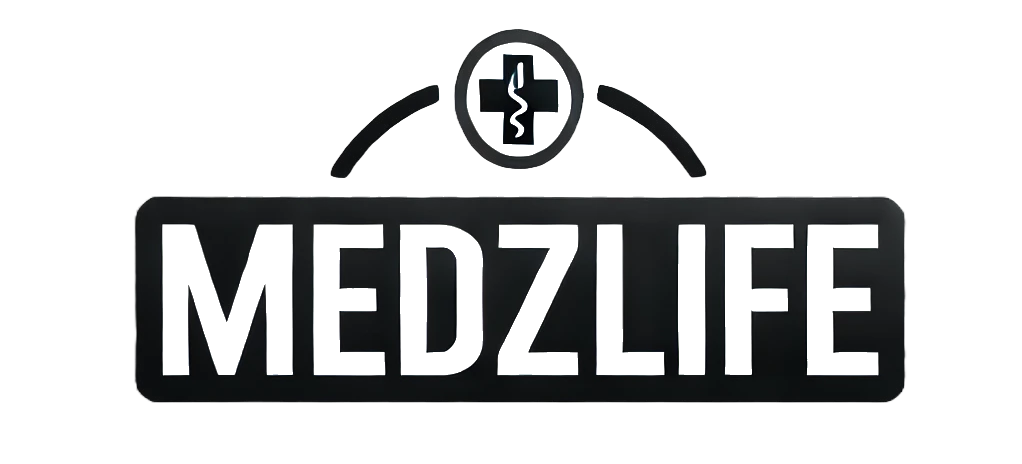Introduction
Imagine a healthy individual suddenly experiencing chest pain which is sudden in onset and intense, sharp pain not bearable, and shortness of breath within moments their life changes dramatically. This terrifying scenario describes myocardial infarction, commonly known as a heart attack. Myocardial infarction is a serious and life-threatening condition that occurs when an embolus or thrombus blocks the blood flow to the heart muscles. Understanding myocardial infarction is important as it remains one of the leading causes of death worldwide. Millions of people suffer from myocardial infarction every year. Many of these could be prevented with awareness and preventive measures. Join us as we provide you with the basic knowledge of myocardial infarction. This blog will help you identify the emergency symptoms, warning signs, and better treatment options.
Definition:
Myocardial infarction commonly known as a heart attack, is a medical emergency that occurs when blood flow to the part of the myocardium is blocked leading to insufficient oxygen delivery to myocardial tissue. When the heart muscle is deprived of oxygen the affected tissue becomes damaged or dies if the blockage is not quickly resolved.
How Myocardial Infarction Differs from Other Heart Conditions:
1. Acute Myocardial Infarction vs. Angina:
|
|
2. Acute Myocardial Infarction vs. Heart Failure:
|
|
3. Acute Myocardial Infarction vs. Arrhythmias:
|
|
4. Myocardial Infarction vs. Cardiomyopathy:
|
|
5. myocarditis vs myocardial infarction:
|
|
Heart anatomy relevant to understanding heart attack:
To understand heart attack it is essential to know the anatomy and blood supply of the heart:
The heart consists of four chambers two upper chambers called atria, and two lower chambers called ventricles. Atria receive blood returning to the heart and ventricles pump blood out of the heart. The lower left chamber, the left ventricle pumps oxygenated blood to the whole body, which is particularly important in myocardial infarction. There are four valves present in the heart. The tricuspid valve (located between right atrium and right ventricle), pulmonary valve ( located between right ventricle and pulmonary artery), mitral valve (located between left atrium and left ventricle), and aortic valve (located between left atrium and aorta). The heart muscle receives oxygen-rich blood through coronary arteries:
- The left main coronary artery supplies blood to the front and side of the heart. LMCA (left main coronary artery) divides into the left anterior descending artery and the left circumflex artery.
- The right coronary artery (RCA) supplies blood to the right side and bottom of the heart.
Blood Flow Through the Heart:
The oxygenated and deoxygenated blood properly circulates throughout the body.
Deoxygenated blood:
- Deoxygenated blood from the upper half of the body returns to the heart through the superior vena cava (SVC), and from the lower half through the inferior vena cava (IVC).
- Deoxygenated blood through the superior and inferior vena cava enters the heart’s right atrium.
- Blood flows from the right atrium into the right ventricle through the tricuspid valve.
- Deoxygenated blood from the right ventricle enters the lungs through the pulmonary arteries (when the right ventricle contracts blood is pushed through pulmonary valves).
- In the lungs, carbon dioxide is exchanged for oxygen, and oxygenated blood returns to the heart.
Oxygenated blood:
- Oxygenated blood returns to the heart from the lungs through pulmonary veins and enters the heart’s left atrium.
- Oxygenated blood enters from the left atrium to the heart’s left ventricle through the mitral valve.
- Oxygenated blood from the left ventricle enters the aorta through the aortic valve.
- From the aorta, blood is distributed to the rest of the body.
Causes and Risk factors:
Primary Causes:
Primary causes that lead to myocardial infarction involve the following steps:
- Atherosclerosis development: atherosclerosis is a condition where arteries become clogged and narrowed due to the buildup of a substance known as plaque (a mixture of body fat, cholesterol, and calcium). Some factors contribute to the development of atherosclerosis. High cholesterol levels {high bad cholesterol (LDL) and low good cholesterol (HDL), HDL helps to remove LDL from the body and decrease the risk of atherosclerosis}, hypertension, smoking, and diabetes.
- Plaque rupture: sometimes plaque becomes unstable and ruptures causing a blood clot to form around the rupture site.
- Artery Blockage: the blood clot can grow and completely block the coronary arteries that supply blood to the heart muscles.
Risk Factors:
Non-modifiable:
Non-modifiable risk factors of myocardial infarction are those we can not change but should be aware of. The non-modifiable risks include age, the risk of heart attack increases as we grow older, gender, male gender faces higher risk at a younger age, and family history of a heart attack, unfortunately, we can not alter these factors.
Modifiable:
Modifiable factors of a heart attack are those within our control. These include lifestyle choices such as maintaining a healthy diet, regular physical activity, avoiding smoking, and managing conditions like high blood pressure, high cholesterol, and diabetes.
Emerging Risk Factors:
Inflammation:
Chronic inflammation is a risk factor contributing to atherosclerosis and heart attack. Inflammation markers such as C-reactive protein, are linked to a higher risk of myocardial infarction (heart attack).
Other less common factors:
Other less common factors of myocardial infarction include insulin resistance such as type 2 diabetes, ongoing stress, mental health disorders like depression or anxiety, sleep disorders such as poor sleep quality or sleep apnea, and long-term exposure to air pollutants (nitrogen dioxide).


4 thoughts on “heart attack: causes and risk factors”